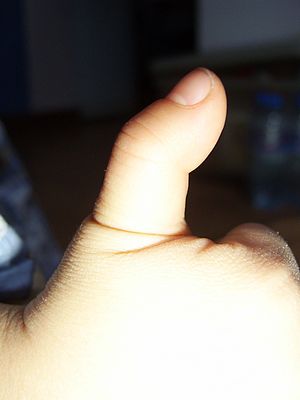Tenosynovial inflammation
| Tenosynovitis | |
|---|---|
 |
|
| Specialty | rheumatology |
| Classification |
· ·
|
|---|---|
| External resources |
Tenosynovitis is the inflammation of the fluid-filled sheath (called the synovium) that surrounds a tendon, typically leading to joint pain, swelling, and stiffness. Tenosynovitis can be either infectious or noninfectious. Common clinical manifestations of noninfectious tenosynovitis include de Quervain tendinopathy and stenosing tenosynovitis (more commonly known as trigger finger)
The most common manifestation of infectious tenosynovitis is in the flexor tendons of the fingers, though infections of other tendon sheaths have been reported as well. The four cardinal signs of infectious flexor tenosynovitis are tenderness to touch along the flexor aspect of the finger, symmetric enlargement of the affected finger, the finger being held in slight flexion at rest, and severe pain with passive extension. Fever may also be present but is uncommon.
Tenosynovitis most commonly results from the introduction of bacteria into a sheath through a puncture or laceration wound, though bacteria can also be spread from adjacent tissue or via hematogenous spread. The clinical presentation is therefore as acute infection following trauma. The infection can be mono- or polymicrobial and can vary depending on the nature of the trauma. The most common pathogenic agent is staphylococcus aureus introduced from the skin. Other bacteria linked to infectious tenosynovitis include (associated with animal bites), Eikenella spp. (associated with IV drug use), and Mycobacterium marinum (associated with wounds exposed to fresh or salt water). Additionally, sexually active patients are at risk for hematogenous spread due to Neisseria gonorrhea (see infectious arthritis).
Noninfectious tenosynovitis can arise from overuse or secondary to other systemic inflammatory conditions such as [rheumatoid arthritis] or [reactive arthritis]. If left untreated, the tendons may undergo stenosis, causing conditions such as de Quervain’s and trigger finger.
...
Wikipedia
